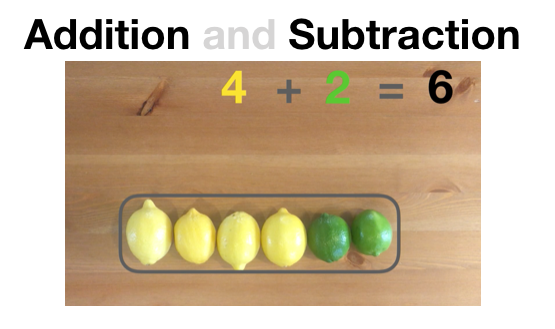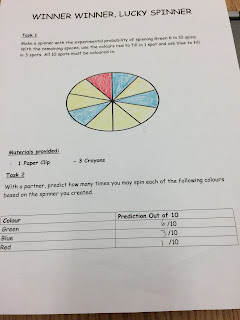Visuals, Manipulatives, and White Boards Oh My!
Welcome back everyone,
 Students need to see something such as drawing out their math equations to see it easier. This can make things a little more interesting as well for students to see as they can become as artistic as they would like in order to solve the equation.
Students need to see something such as drawing out their math equations to see it easier. This can make things a little more interesting as well for students to see as they can become as artistic as they would like in order to solve the equation.
It's a really funny show that involves different math problems that the children try to solve using different math solutions. It can be something you watch in the classroom to get the children thinking about the topic or try to make a problem out of the episode.
If you are lucky enough to have a school that has interactive white boards we can start to integrate these boards into the classroom. According to this article by Catherine D. Bruce the IWB provides (a) visually dynamic support for the illustration of complex mathematics; (b) opportunities for shared student reasoning, including the use of IWB tools to justify and consolidate ideas and to debate multiple student solutions; and (c) opportunities to increase student agency and risk-taking. But how do we get started using these in the classroom. This article also outlines a few tips to getting started such as :
• Dedicate IWBs to classrooms. Secure the IWB in the classroom, rather than using it as a portable IWB. Researchers have noted that non-fixed IWBs are used for less time each day than those that are directly and permanently connected to classrooms.
• Combine professional learning with IWB installation. Pair the installation of IWBs with teacher professional learning models (such as lesson study and collaborative action research) that emphasize collaboration and effective teaching.
• Find ways to maximize student use of the IWB. Student use of the IWB requires careful management of the classroom learning environment, particularly when some students are using the IWB while others are working at their desks.
• Treat the IWB as a tool for production rather than consumption. Encourage students to produce ideas, information, and solutions, using the IWB to solve problems, generate solutions, and clearly illustrate their thinking.
We also talked about how we can integrate apps into the classroom that can help our students become more engaged with specific math topics. We can use things such as Kahoot! (interactive quiz game) to give a quick assessment after a lesson to see if students really understand the topic. We can use the game prodigy to give students an interactive game to practice the different math skills you are teaching in the classroom. These are just to name a few. You will have to explore different math games or math apps and evaluate them for the use in the classroom. Only you will be able to give students the help they need in the classroom. You will know your students and what will be the most effective app they can use to help in their learning.
That is all for today. Tune in next week for our final blog post.
We need to get our children more involved in math and begin to love math. According to this article we need to find ways in which to get our students loving math more. In order get children more engaged in math and making them become more fluent in it we need to encourage play. Experiential learning activities in informal contexts, actual or virtual, are designed so that when children play, engage, explore, or interact, they cannot help but learn science and mathematics because they are doing science or mathematics. The way children feel about mathematics profoundly influences what they do with it and how they reflect on it, which in turn influences how knowledge grows and connects.
This week was all about the way in which we have our students learn and become more in love with math by using visuals, manipulatives and technology. Let's start with visuals & manipulatives. Some of our students really need this help when it comes to learning math. Some students need to be able to see or feel how they do specific math problems.
 Students need to see something such as drawing out their math equations to see it easier. This can make things a little more interesting as well for students to see as they can become as artistic as they would like in order to solve the equation.
Students need to see something such as drawing out their math equations to see it easier. This can make things a little more interesting as well for students to see as they can become as artistic as they would like in order to solve the equation.
Manipulatives are a great way for students to also learn math. Sometimes they don't know exactly how they want to draw the equation out and they need something more physical in their hands. This is where some of these things can come in handy. Students can move them around and use them to see they can solve the equation. Our kinesthetic learners in the classroom really appreciate when we are able to give them something they can use and move around.
Now we need to move into something that is becoming more prevalent in our classrooms. We have the ever present technology. To begin we want to find something that may get out children more engaged in the classroom or the home. Children are still watching much more television in their daily lives but we can change what they watch by throwing in educational videos. For example when it comes to math there is a great show called the Prime Radicals. Here is an example of an episode:
If you are lucky enough to have a school that has interactive white boards we can start to integrate these boards into the classroom. According to this article by Catherine D. Bruce the IWB provides (a) visually dynamic support for the illustration of complex mathematics; (b) opportunities for shared student reasoning, including the use of IWB tools to justify and consolidate ideas and to debate multiple student solutions; and (c) opportunities to increase student agency and risk-taking. But how do we get started using these in the classroom. This article also outlines a few tips to getting started such as :
• Dedicate IWBs to classrooms. Secure the IWB in the classroom, rather than using it as a portable IWB. Researchers have noted that non-fixed IWBs are used for less time each day than those that are directly and permanently connected to classrooms.
• Combine professional learning with IWB installation. Pair the installation of IWBs with teacher professional learning models (such as lesson study and collaborative action research) that emphasize collaboration and effective teaching.
• Find ways to maximize student use of the IWB. Student use of the IWB requires careful management of the classroom learning environment, particularly when some students are using the IWB while others are working at their desks.
• Treat the IWB as a tool for production rather than consumption. Encourage students to produce ideas, information, and solutions, using the IWB to solve problems, generate solutions, and clearly illustrate their thinking.
We also talked about how we can integrate apps into the classroom that can help our students become more engaged with specific math topics. We can use things such as Kahoot! (interactive quiz game) to give a quick assessment after a lesson to see if students really understand the topic. We can use the game prodigy to give students an interactive game to practice the different math skills you are teaching in the classroom. These are just to name a few. You will have to explore different math games or math apps and evaluate them for the use in the classroom. Only you will be able to give students the help they need in the classroom. You will know your students and what will be the most effective app they can use to help in their learning.
That is all for today. Tune in next week for our final blog post.




Comments
Post a Comment